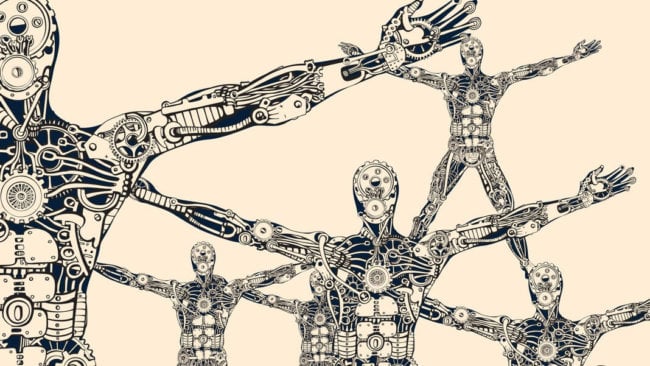
The era of cyborgs may be closer than we think. Rapid improvement of medical robots, wearable devices and implants means that a lot of people are already half machines, and this trend will only gain momentum. Most notably, in the field of medical prosthetics is a very effective prostheses made of titanium and carbon fiber are gaining popularity. The use of “blades” of the Paralympic athletes, even raised the question of whether or not they give you the advantage over biological limbs.
For decades, myoelectric prosthetics — artificial limb when picking up signals of the muscles, allowing a person to control the device — provided patients with a mechanical replacement of lost limbs.
Now progress in robotics leads to the appearance of the prosthetic hand, which is closer to the original terms of agility. Michelangelo prosthetic hand is completely flexible and precise enough to perform such tasks as cooking and Ironing.
Scientists have even demonstrated a robotic hand that can feel and be controlled by thought. And just last month, another group of scientists showed that setting a standard myoelectric prosthesis with a camera and a computer vision system allowed him to “see” and to seize objects without having to move a muscle.
Medical exoskeletons are already commercially available — devices such as ReWalk and Ekso Bionics, is designed to help people with spinal cord injuries who are unable to stand and walk. In addition, these technologies are used for rehabilitation of people after stroke or other traumas, providing them with the movement.

Currently, these technologies only serve to those who have lost the ability to move partially or completely, but not always. The pace of development of robotics and artificial intelligence are accelerating, and it’s time to start a discussion about the direct application of these technologies in the near future.
Future assistive technology not only compensate for the disability people, but improve human capacity, to lead him beyond our natural level. Associated with this transformational effect will lead to widespread social, political and economic issues.
All of this can already be seen in the development of military exoskeletons designed to improve the endurance of soldiers. Strangely, the Japanese scientists recently proposed the idea to add them to our limbs, not to replace them. The project MetaLimbs provides people two extra limbs that can be controlled using sensors on the feet.
Last week in Science Robotics appeared a study demonstrating that the soft robotic exosuit effectively lightened the load on the runner when not followed a natural pattern of human movements, but instead used a computer modelling for decisions about the application of force.
This suggests that the machine not only can significantly increase muscle strength, but also to optimize the biomechanics of our movements. And, as the authors of the works, the biomechanics — and that’s just the research conducted for the sake of reproduction and, finally, improve our abilities.
Devices like the cochlear implants used to restore hearing for many years, and now there is a number of experimental attempts to create bionic eyes that restore sight to the blind. In recent months actively discussed the initiative to improve our intellectual abilities through neural implants.

Obviously, it’ll be a long time before people will start to demand the amputation of his hand to get a brand new, shiny and robotic. And it is likely that companies that are actively promoting brain-computer interfaces, consumer-grade, overestimate the number of people willing to go through the voluntary brain surgery.
However, we have already taken the first steps towards the unification of our biological “I” with the machines.
It can be argued that smartphones have become a prosthesis, intended to enhance memory and communication. Others, more candid cybernetic additions may appear in our lives.
What does it mean for mankind? Natural evolution has long relied on mutations that provide short-lived, but significant benefits for the population. If the new technology prosthetics will begin at once to bring these advantages, the effects can be very heterogeneous.
The main concern is that the newest additions will be available only to the few who can afford them, and in just a few generations, you can be in the elite that will not only surpass the rest of mankind financially, but also physically and cognitively.
At the same time, these technologies strongly promise to restore a decent standard of living of countless people affected by injury or illness. And if they are applied fairly, they will help us to solve many of the problems facing society.
It is important that the conversation about how to get us through this stage of our evolution, we need to start now. Because until now, these devices were developed primarily for the recovery of lost functions, we miss the fact that they can not only to recover but also to create new ones.
What happens when Cybernetics will exceed the medicine?
Ilya Hel